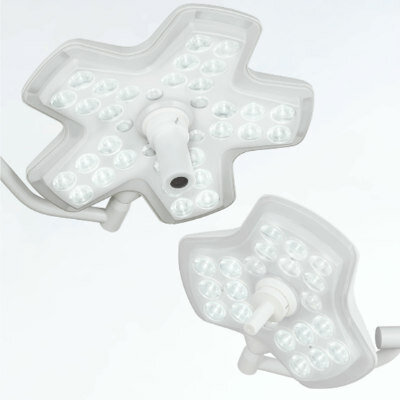Smart Sutures Could Help Patients Heal After Surgery
|
By HospiMedica International staff writers Posted on 18 May 2023 |

Originating from the times of ancient Rome, catgut sutures — created from the purified collagen of bovines, ovines, or caprines, but not felines — are noted for their strength and their capacity to naturally disintegrate within roughly three months. Despite the availability of synthetic absorbable sutures, catgut sutures remain in use across various surgical procedures. Now, engineers have created "smart" sutures, drawing inspiration from age-old sutures. These not only secure tissue but also sense inflammation and deliver drugs. These new sutures, based on animal tissue, are similar to the catgut sutures. However, in a modern adaptation, engineers have coated these sutures with hydrogels capable of being embedded with sensors, medication, or cells that release therapeutic molecules. Researchers anticipate that these sutures can assist patients with Crohn's disease in their recovery after intestinal surgery. Furthermore, the researchers suggest these sutures could also be modified for healing wounds or surgical cuts elsewhere in the body.
A team of engineers at Massachusetts Institute of Technology (MIT, Cambridge, MA, USA) set out to improve upon the pre-existing tissue-derived suture by creating a material that was not only tough and absorbable but also exhibited enhanced functionalities like sensing and drug delivery. These sutures could be of particular benefit for Crohn's disease patients requiring partial intestinal removal due to obstructions caused by severe scarring or inflammation. The operation involves rejoining the remaining ends of the intestine after a section has been removed. However, if the seal isn't secure, dangerous leaks could develop for the patient. Aiming to mitigate this risk, the MIT team sought to design a suture that could not only hold the tissue together but also detect inflammation — a potential indication of insufficient healing in the resealed intestines.
The researchers crafted their new sutures from pig tissue, which they "decellularized" with detergents to lower the likelihood of inflammation in the host tissue. This method resulted in a cell-free material known as "De-gut", comprising structural proteins like collagen and other biomolecules found in the extracellular matrix surrounding cells. After drying and twisting the tissue into strands, the team assessed its tensile strength, a measure of how much stretching the tissue can endure before breaking, and found it comparable to commercially available catgut sutures. It was also observed that the De-gut sutures induced much less immune response from the surrounding tissue compared to traditional catgut. The team then aimed to enhance the suture material with additional capabilities by coating the sutures with a layer of hydrogel, enabling the integration of various types of cargo — microparticles capable of sensing inflammation, different drug molecules, or living cells.
For the sensor application, the team engineered microparticles coated with peptides that are released when inflammation-linked enzymes known as MMPs are present in the tissue. These peptides can be detected using a simple urine test. The researchers also demonstrated that the hydrogel coating could transport drugs used for treating inflammatory bowel disease, including a steroid called dexamethasone and a monoclonal antibody known as adalimumab. These drugs were delivered via microparticles created from FDA-approved polymers such as PLGA and PLA, which help control the rate of drug release. The researchers suggest that this method could be tailored to deliver other types of drugs, like antibiotics or chemotherapy drugs.
Additionally, these smart sutures could be utilized to deliver therapeutic cells, such as stem cells. To investigate this, the researchers incorporated stem cells, engineered to express a fluorescent marker, into the sutures, finding that these cells remained viable for at least seven days when implanted in mice. These cells were also capable of producing vascular endothelial growth factor (VEGF), a growth factor that stimulates blood cell growth. The researchers are now focusing on further testing of these potential applications, as well as scaling up the production process for these sutures. They also plan to investigate the potential of using these sutures in body regions beyond the gastrointestinal tract.
“What we have is a suture that is bioderived and modified with a hydrogel coating capable of being a reservoir for sensors for inflammation, or for drugs such as monoclonal antibodies to treat inflammation,” said Giovanni Traverso, an associate professor of mechanical engineering at MIT, a gastroenterologist at Brigham and Women’s Hospital, and the senior author of the study. “Remarkably, the coating also has the capacity to retain cells that are viable for a prolonged period.”
Related Links:
MIT
Latest Surgical Techniques News
- Robotic Assistant Delivers Ultra-Precision Injections with Rapid Setup Times
- Minimally Invasive Endoscopic Surgery Improves Severe Stroke Outcomes
- Novel Glue Prevents Complications After Breast Cancer Surgery
- Breakthrough Brain Implant Enables Safer and More Precise Drug Delivery
- Bioadhesive Sponge Stops Uncontrolled Internal Bleeding During Surgery
- Revolutionary Nano Bone Material to Accelerate Surgery and Healing
- Superior Orthopedic Implants Combat Infections and Quicken Healing After Surgery
- Laser-Based Technique Eliminates Pancreatic Tumors While Protecting Healthy Tissue
- Surgical Treatment of Severe Carotid Artery Stenosis Benefits Blood-Brain Barrier
- Revolutionary Reusable Duodenoscope Introduces 68-Minute Sterilization
- World's First Transcatheter Smart Implant Monitors and Treats Congestion in Heart Failure
- Hybrid Endoscope Marks Breakthrough in Surgical Visualization
- Robot-Assisted Bronchoscope Diagnoses Tiniest and Hardest to Reach Lung Tumors
- Diamond-Titanium Device Paves Way for Smart Implants that Warn of Disease Progression
- 3D Printable Bio-Active Glass Could Serve as Bone Replacement Material
- Spider-Inspired Magnetic Soft Robots to Perform Minimally Invasive GI Tract Procedures
Channels
Critical Care
view channel
Wearable Patch for Early Skin Cancer Detection to Reduce Unnecessary Biopsies
Skin cancer remains one of the most dangerous and common cancers worldwide, with early detection crucial for improving survival rates. Traditional diagnostic methods—visual inspections, imaging, and biopsies—can... Read more
Pulse Oximeter Index Offers Non-Invasive Guides for Fluid Therapy
In patients with acute circulatory failure, deciding whether to administer intravenous fluids is often a life-or-death decision. Too little fluid can leave organs underperfused, while too much can cause... Read morePatient Care
view channel
Revolutionary Automatic IV-Line Flushing Device to Enhance Infusion Care
More than 80% of in-hospital patients receive intravenous (IV) therapy. Every dose of IV medicine delivered in a small volume (<250 mL) infusion bag should be followed by subsequent flushing to ensure... Read more
VR Training Tool Combats Contamination of Portable Medical Equipment
Healthcare-associated infections (HAIs) impact one in every 31 patients, cause nearly 100,000 deaths each year, and cost USD 28.4 billion in direct medical expenses. Notably, up to 75% of these infections... Read more
Portable Biosensor Platform to Reduce Hospital-Acquired Infections
Approximately 4 million patients in the European Union acquire healthcare-associated infections (HAIs) or nosocomial infections each year, with around 37,000 deaths directly resulting from these infections,... Read moreFirst-Of-Its-Kind Portable Germicidal Light Technology Disinfects High-Touch Clinical Surfaces in Seconds
Reducing healthcare-acquired infections (HAIs) remains a pressing issue within global healthcare systems. In the United States alone, 1.7 million patients contract HAIs annually, leading to approximately... Read moreHealth IT
view channel
Printable Molecule-Selective Nanoparticles Enable Mass Production of Wearable Biosensors
The future of medicine is likely to focus on the personalization of healthcare—understanding exactly what an individual requires and delivering the appropriate combination of nutrients, metabolites, and... Read moreBusiness
view channel
Philips and Masimo Partner to Advance Patient Monitoring Measurement Technologies
Royal Philips (Amsterdam, Netherlands) and Masimo (Irvine, California, USA) have renewed their multi-year strategic collaboration, combining Philips’ expertise in patient monitoring with Masimo’s noninvasive... Read more
B. Braun Acquires Digital Microsurgery Company True Digital Surgery
The high-end microsurgery market in neurosurgery, spine, and ENT is undergoing a significant transformation. Traditional analog microscopes are giving way to digital exoscopes, which provide improved visualization,... Read more
CMEF 2025 to Promote Holistic and High-Quality Development of Medical and Health Industry
The 92nd China International Medical Equipment Fair (CMEF 2025) Autumn Exhibition is scheduled to be held from September 26 to 29 at the China Import and Export Fair Complex (Canton Fair Complex) in Guangzhou.... Read more














